http://rhythmsfitness.com/classes/full-body-workout/.git/HEAD 14 September 2020
neurontin 300 mg cap Ancient Egyptians mastered the integration of anatomical knowledge and mythological stories into artistic symbols and figures. Artistically, the Eye is comprised of six different parts. Mythologically, each part is considered to be an individual symbol. Anatomically, each part corresponds with the center of a particular human sensorium.
—ReFaey, Quinones, Quiñones-Hinojosa (Cureus, 2019)
Integration of Symbols and Knowledge
Many have seen the Eye of Horus (or the Eye of Ra) as a decorative motif in jewelry. Historically, the Udjat (eye of Ra) was a talisman of protection, regeneration, and health, and was often included as a funerary item:
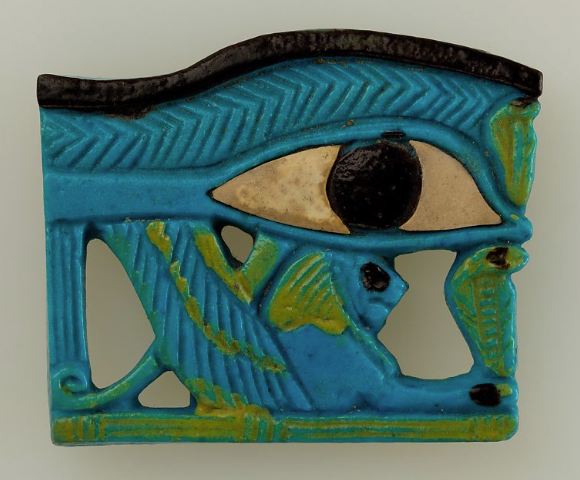
The lion and serpent (cobra) represent authority and the more powerful or darker aspects associated with the eye goddess, who was variously personified as the mother, daughter, or consort of the sun god.
Horus was a sky deity, depicted as a raptor. His right eye was associated with the sun and Ra, the left eye with the moon and the god Thoth. In this Udjat, from around the same time period as the one above, the wing and feet of the raptor replace the lion, and are combined with a single serpent, which may represent Seth:
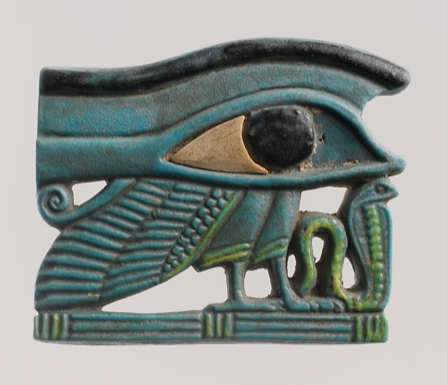
The Eye symbology may predate the Egyptians, but this is murky history that I know very little about, so I will restrict my comments to Egyptian interpretation of this symbol. Some of this information was passed on to people in the Middle Ages through Greek intermediaries and merchants, but I don’t know how much was known by the 15th century.
The Myth Behind the Eye
The god of storms and disorder is known as Seth (sth). Seth vied with his relative Horus for the rule of Egypt. Seth stole or injured Horus’s eye, which was then restored by Thoth. Thus, the restored eye came to represent healing and regeneration.
Variations of the eye motif were especially popular in the millenium leading up to the Current Era and, in a specific form, came to embody other concepts as well. In addition to representing the senses, the Udjat has a mathematical meaning for each of its primary contours:
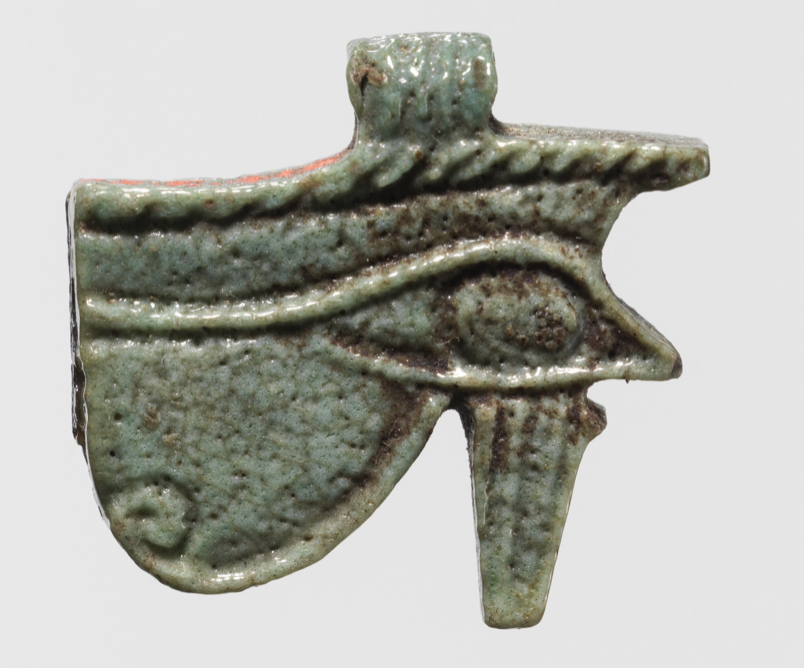
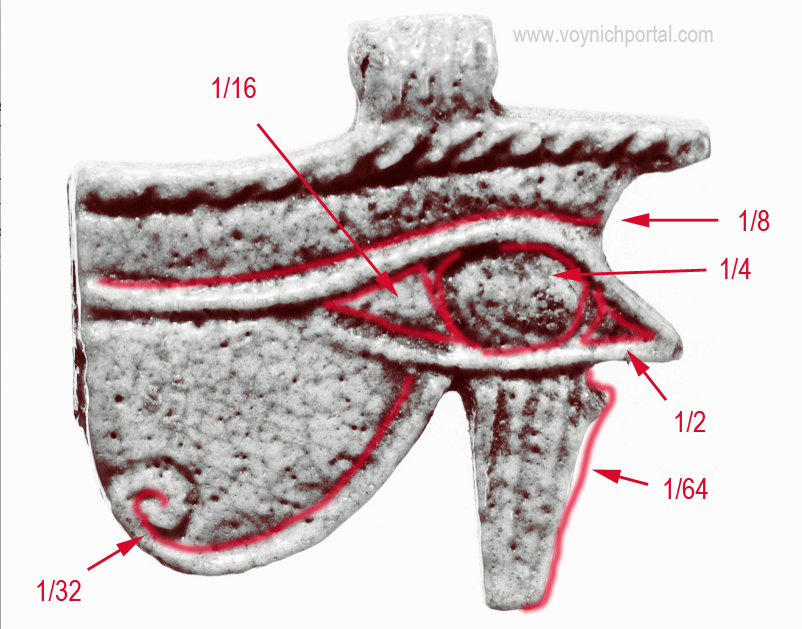
The fractions represent powers of two.
This propensity for integrating multiple interpretations into symbols with mythical significance caught my attention because it reminded me of the Voynich Manuscript. It’s possible the VMS illustrations were drawn to embody more than one concept. If so, there is a historical precedent for this, one that that has come down to us primarily through Egyptian writings and artifacts.
And there’s more…
The right eye of Horus came to represent the sun, the left eye the moon. Which means that the blotting out of a right eye could represent a solar eclipse. Ancient myths might actually be a codification of this kind of event, with “gods” as personifications of the heavens.
Can this be more directly related to the VMS?
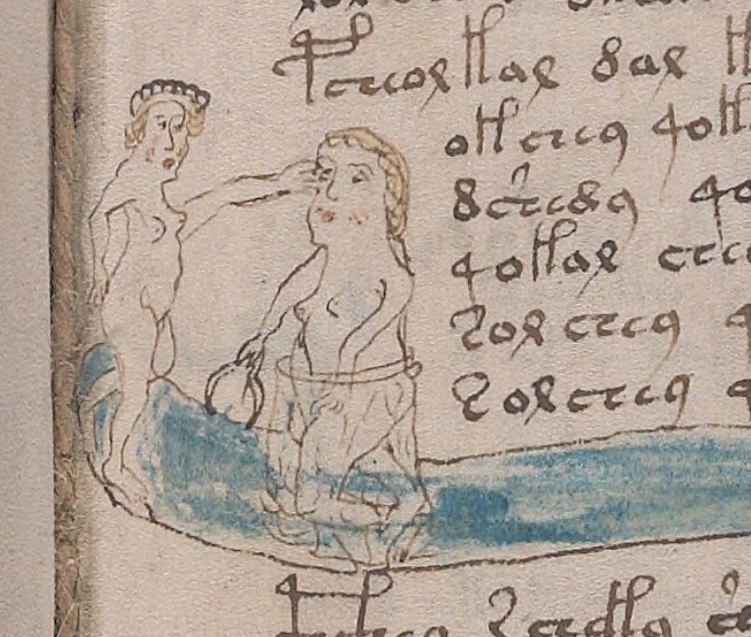
On Folio 80r we have an enigmatic illustration of a nymph pointing to the right eye of another nymph, or possibly stabbing or plucking it out. This is a departure from many of the more smiley and benign-looking VMS encounters. Could this unexpectedly violent interaction be a symbol for a solar eclipse?
If this seems implausible, look at the object in the nymph’s hand. The Eye of Horus is simultaneously a talisman, an embodiment of ancient stories, a celestial reference, and a representation of measures (the six pieces into which the eye broke in a battle with Seth).
If the blotting of the eye represents a solar eclipse, then perhaps the item in the hand of the nymph is a measuring caliper, a reference to the multiple uses for the Eye of Horus.
Is the eye-poking scene related to the one below It?
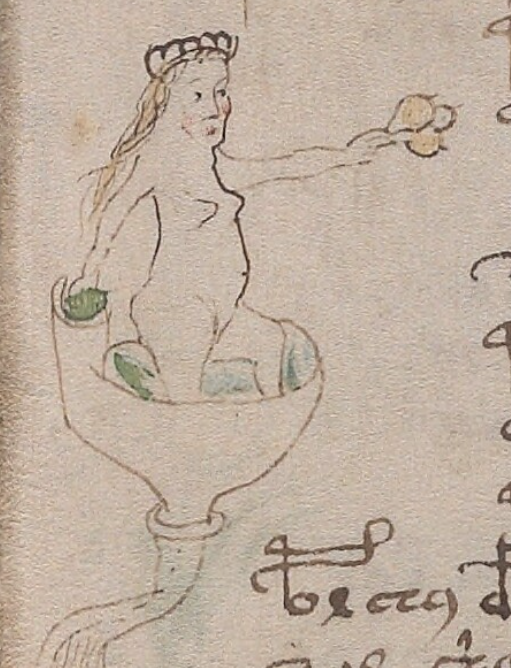
Like the ebb and flow of the Nile river, the battles between Seth and Horus stretched over decades, with Horus sometimes teaming up with Ra. Seth is sexually indiscriminant, makes a deal with Horus to sodomize him, and leaves behind his supposedly poisonous semen (Herman te Velde, 1967). Horus, at one point, steals Seth’s testicles (although I don’t know if this happened before or after their sexual encounter).
Could this drawing below the eye-poking scene be a sly reference to Seth’s severed testicles? Yes, I know, there are three bumps, but this is the VMS, nothing seems explicitly real.
Summary
Koen Gheuens posted a plausible interpretation for the figures at the top of this folio and the idea of the nymphs representing Seth and Horus and a possible reference to a solar eclipse does not fit well with the story of Philomela. So either the context shifts, or there is a connection that is more abstract (e.g., medieval astrology/astronomy), or it means something else.
If the Philomela story is correct, then the connection via astrology doesn’t seem very strong. Procne and Philomela were turned into birds, not stars.
Could it be a context-shift? Are there precedents for this possibility?
Morgan MS M.126 (England, c. 1470) is a series of tales that includes the story of Philomela on folio 125v. On the left, Tereus cuts out her tongue. On the right, Procne takes vengeance by feeding Tereus his child (note also the fancy containers). Above the action, the women are turned into birds:
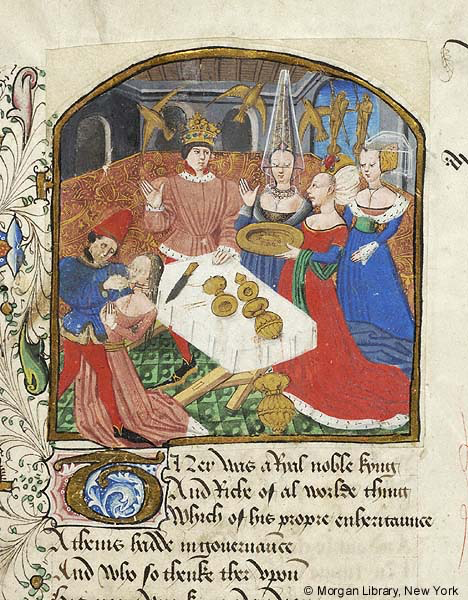
On the next folio is a different story. We go from Philomela, which is more of a morality tale, to a story of gods associated with stars. Here we see Arcas about to shoot Callisto, who Juno had transformed into a bear. When he saw what was about to happen to the bear, Juno changed Arcas into a bear, as well, and placed both of them in the sky to become Ursa Major and Minor, the Great and Little bears:
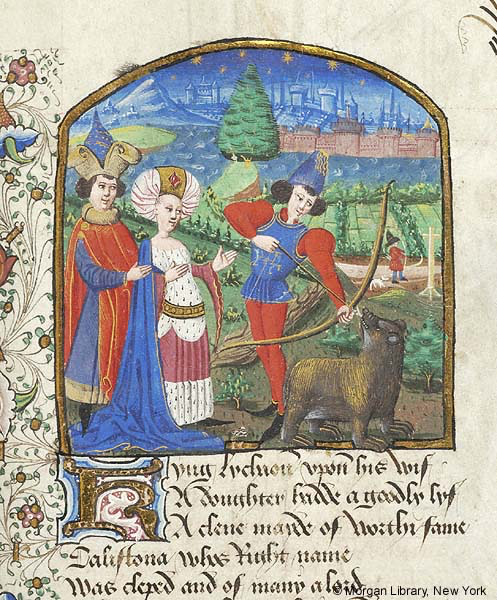
Two folios later is the biblical story of Lazarus, and at the beginning of the manuscript is the story of Troy. In other words, Morgan M.126 is an eclectic collection from a number of mythical, moral, and historical sources. It is possible for stories of different genres, or with a different focus, to directly follow one another.
So perhaps there is more than one tale represented on VMS folio 80r and maybe the eye-poking scene represents a different myth from the one at the top. If it does represent a solar eclipse, then maybe it is related to cosmological or astrological imagery on other folios.
J.K. Petersen
© Copyright September 2020, J.K. Petersen, All Rights Reserved
